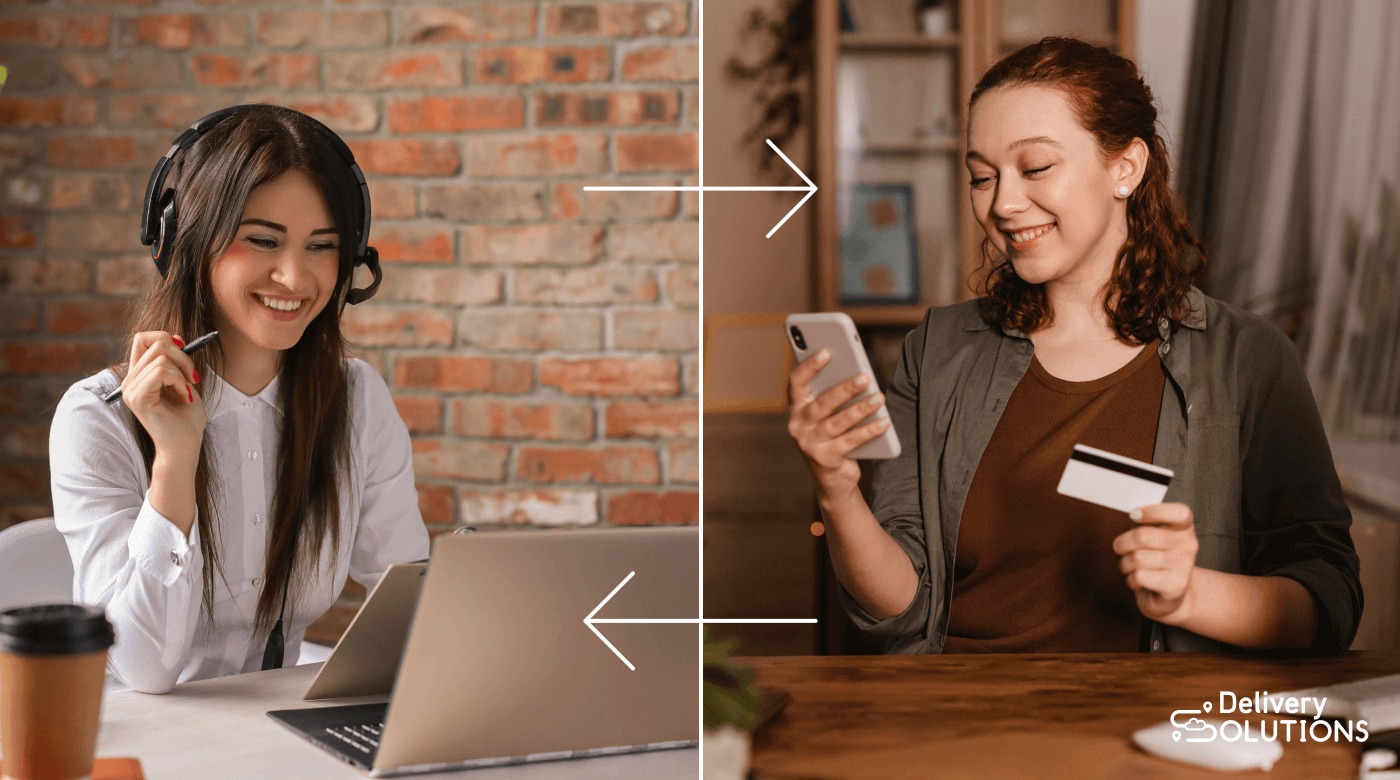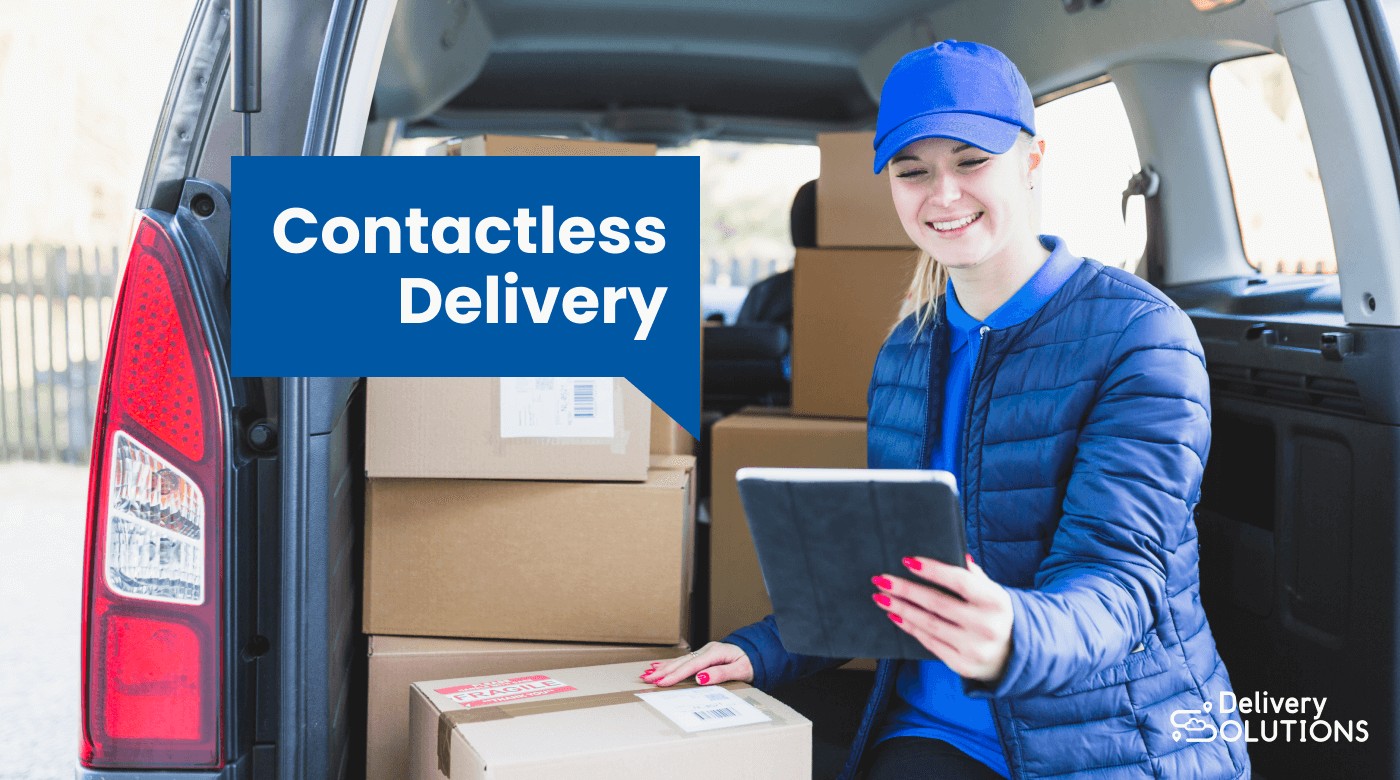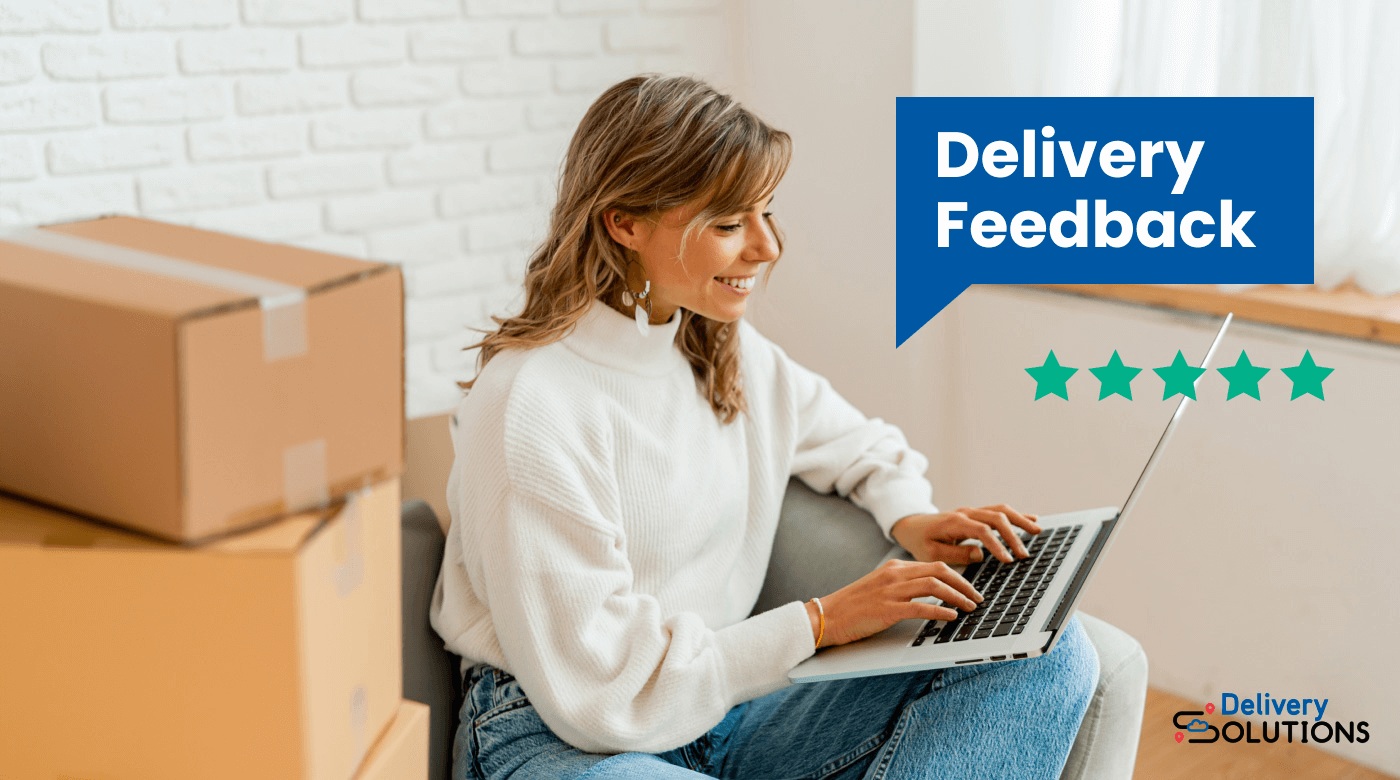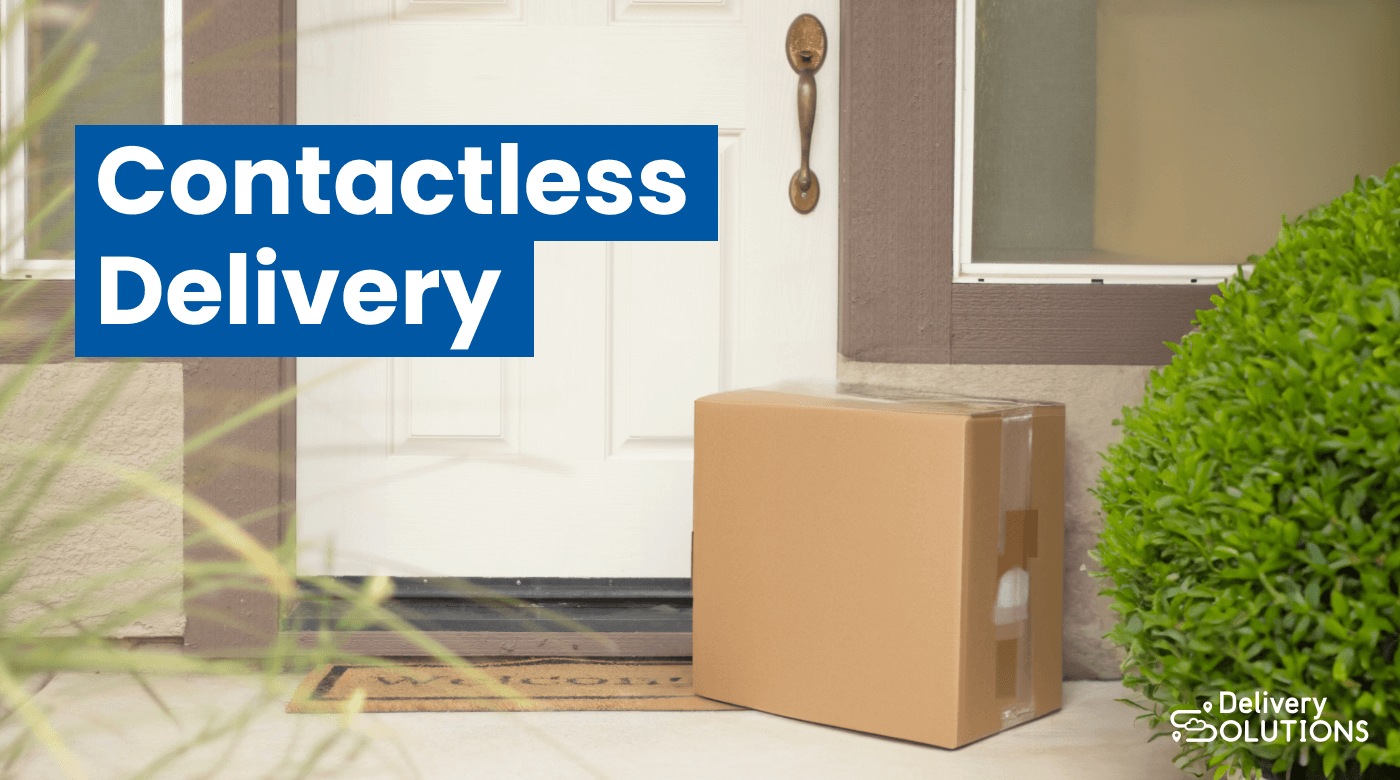Does your business provide contactless delivery to your customers? A growing number of consumers are requesting that their deliveries be contactless. If you can’t meet their needs, they’ll go elsewhere, or they might even complain about your deliveries to their friends and networks.
Delivery orders have increased dramatically, and businesses need to adapt to survive. The ease of one-click ordering and contactless delivery options mean more customers seek them out. Your company has to serve their needs, or someone else will.
The solution is to implement contactless delivery in your business. Your customers will thank you for offering an option that suits their needs since you’ll keep them and your delivery people safe. Contactless delivery is beneficial for everyone involved.
Especially with the rise of social distancing in recent years, offering contactless delivery is no longer optional. This article will teach you why and how to provide contactless delivery and how to use delivery management software to streamline the contactless delivery process.
What is contactless delivery?
Contactless delivery provides extra safety and security for your customers and employees. It smooths out the delivery process, especially in high-risk situations. That’s why it’s an essential service that you should offer your delivery customers.
Contactless delivery is a required option for almost all deliveries. Customers expect it to be available; if you don’t offer it, your competitors will. The COVID-19 pandemic turned contactless delivery options from a ‘nice-to-have’ to a ‘must-have’ service option for your customers.
As the name suggests, it’s delivering a product without contacting the customer. There are various reasons customers want to avoid contact during the delivery.
There are different types of contactless delivery. Sometimes it just means avoiding physical interactions with the customer. In this case, your driver will simply leave the package, and the customer will retrieve it.
For a delivery to be fully contactless, there should be an option for no contact whatsoever, including phone calls. Customers might choose fully contactless service for various reasons, including social anxiety or wanting to remain anonymous. Allow your customers to select this level of no-contact deliveries.
Benefits of contactless delivery
Contactless delivery is beneficial for your business, your employees, and your customers. Your drivers stay safe from potential hazards in the delivery area. Customers are protected from anything that might cause them harm through contact with your delivery driver.
Here are four main benefits of providing contactless delivery to your customers:

Privacy
Contactless delivery maintains discretion for both your customer and employees. It allows them anonymity. It minimizes the risk of invasion of their privacy or personal space.
Speed
No-contact deliveries can run more quickly and smoothly using the right delivery management software. Your employees don’t have to spend time getting the customer's attention. The ordering process is entirely digital, so it doesn’t take up your company’s resources or time.
Safety
This delivery method protects your customers and your employees from any harm that might come from their interaction. Your employees are protected from any issues that the customer might cause. And your customer feels safe knowing they won’t have to interact with an unknown driver. This is especially important if the customer suffers from a contagious illness, which was prevalent during the COVID-19 Pandemic.
Convenience
Contactless deliveries are more convenient than other types because the driver and customer don’t have to come into contact to make the delivery. That means the delivery can still be completed, even when a customer is busy with other things. If the customer prefers, they don’t need to be home when the delivery is made.
5 key points to providing contactless delivery
As you're considering the different aspects of your contactless delivery, keep these things in mind.
Digital payments
The first step in contactless delivery is providing customers with a digital payment option. They can pay without ever coming into physical contact with anyone at your company. Contactless payment is a standard option at most businesses regardless of delivery method.

Modern technology makes this more accessible than ever. There are countless options for providing digital payments.
Here are a few apps you can use for digital payment options:
- CashApp
- Venmo
- Zelle
- Apple Pay
- Samsung Pay
- Android Wallet
There are numerous other options, too. Pay attention to your customers and ask which apps they prefer to use. Signing up for the major global providers is a great starting point.
Digital payments enable contactless delivery. They allow your customers to order what they need privately and pay for it beforehand. There’ll be no need to exchange payment when the delivery is made.
Digital payments are better for your business, too. They’re easier to invoice, receive and track than other forms of compensation. You can avoid physical contact by not providing the customer with a paper invoice or receipt. And your drivers don’t need to handle or deposit payments for your company.
You can start accepting more types of digital payments by contacting your payment processor or signing up for a new one. For some providers, like CashApp and Venmo, you’ll have to create a business account within the platform to accept their payments. Once you sign up, just direct their payments into your business bank account, and you’re all set.
Customer communication
The next element of contactless delivery is providing customers with a method to communicate with your company. Communication is key to offering a personalized customer experience. Even a phone call can be avoided to make the delivery truly contactless. Properly maintaining the balance of communicating while avoiding physical contact is essential for providing stellar customer service.

Communication gives the customer the opportunity to let your driver know when they would like the delivery and for them to share any specific instructions regarding the no-contact delivery. For example, they might request that the delivery be left in a particular spot outside their home, like a table on their porch. This improves their experience by having the product delivered exactly where they want it.
They can also use this to give your driver a heads-up about any unique elements of the delivery. For example, they can provide a gate code or warn the driver about a dog in the yard. One-way communication from the customer to your company can be done through the checkout or delivery details screen. Giving them the opportunity to share their requirements makes it easier for your delivery drivers to provide the best possible customer service.
Communication goes both ways. Your company should clearly communicate the delivery details and process to each customer. You can also let them know ahead of time if there are any issues or delays with the delivery. Pointing out issues before the delivery will help maintain a high level of customer service and make it less likely they’ll file a complaint due to delivery problems.
Driver training
Your drivers will need to be trained to provide contactless delivery in the proper manner. Every step of the contactless delivery process can be taught with the right training modules. They can be instructed to avoid knocking or ringing a bell at the customer’s residence, for example. Every step and rule for the delivery should be included in the training.

Training your driver to deliver with a high level of service ensures there won’t be any miscommunication regarding how to carry out the delivery. If the driver doesn’t know the delivery is contactless, they may accidentally violate the customer’s wishes. Proper training leads to a higher level of customer satisfaction and fewer complaints.
Contactless deliveries are enabled by your delivery software, like Delivery Solutions. For retailers, Delivery Solutions can rapidly onboard any number of delivery providers from a single contract. That means you can opt to use delivery providers who are already skilled in providing contactless deliveries.
Contactless delivery is a simple process. It just needs to be clearly delineated for your drivers ahead of time. Your training should teach them how to properly execute a contactless delivery and how to determine whether a customer requested contactless delivery. Most delivery mistakes can be avoided ahead of time by using the right software and communication methods.
Proof of delivery
When there’s no actual physical exchange of goods in contactless delivery, care needs to be taken to prove that the delivery was made properly. Proof of delivery can be as simple as a picture of the item on the customer’s doorstep. Offering contactless threshold delivery also maximizes convenience for your customers.

Train your drivers to take a photo to prove the delivery was made. You never know what will happen between your delivery time and when the customer retrieves the delivery. Proof of delivery is essential for customer satisfaction and the smooth operation of your delivery system.
Proof of delivery protects your company from liability or accusations of negligence after the delivery is completed. Once your proof of delivery is sent to the customer, responsibility for the delivered goods shifts from your company to the customer. This is especially important in case the item is stolen before being received.
You’ll rarely need to use the proof of delivery, but it’s invaluable when needed to solve a dispute with a customer. When you show that the delivery was made properly, their complaints may shift from your company to the proper target. Providing a photo also helps in the event they need to file a police report to recover stolen property. It’s safer for all parties if proof of delivery is shared for every delivery.
Feedback mechanism
Finally, you’ll want to provide a method for customers to provide feedback to your company and driver after the delivery is made. Their feedback will acknowledge that the delivery was made properly and point out areas that can be improved.

The simplest way to get feedback on your contactless delivery process is by sending customers an online form to complete after each delivery. Only a small percentage of customers will complete the form, but they’ll give you insight into ways you can improve your operations. You can offer discounts or other perks in order to persuade customers to complete the forms.
Another way to gather customer feedback is by looking at what they’re already posting online about your company. You can start by pursuing sites like Yelp, Facebook, and Google Reviews. Look at your business page on each site and see if any issues are mentioned by multiple customers. These are great places to start refining and improving your service.
Any issues that arise with the delivery can be resolved after learning about them from the feedback. You can implement them in your company and watch your feedback improve over time. Listening to customer feedback is an endless, iterative process of improvement.
Once the issue is resolved, you can respond to each customer with confirmation that they won’t experience that problem with your company again. You’ll maintain that customer relationship and show other customers that your company listens to their feedback.
Start offering contactless deliveries today
Contactless delivery is an essential option to offer your delivery customers, especially after the COVID-19 Pandemic. It’s enabled by digital payments from the customer to your business. Digital devices facilitate communication with your customers. Your drivers have to be trained to properly execute contactless deliveries for your customers. They also have to provide proof of delivery for the customers. And finally, your customers should have a way to give feedback on their delivery experience.
All that’s left is to use what you’ve learned to implement contactless delivery in your business. Delivery Solutions is a powerful solution for providing contactless delivery with the world’s first unified omnichannel orchestration platform. Our software integrates contactless delivery with all other steps of the delivery process.
DeliverySolutions has the world’s first unified omnichannel platform, which can help your company integrate its contactless delivery option with all other steps of the delivery process.
Caitlyn Metzker
Caitlyn Metzker, a professional with 9 years of experience, brings a wealth of insight to her Sr. Enterprise Account Executive role. As a University of South Carolina graduate, Caitlyn has honed her skills within the industry previously with Roadie and Kabbage. Originating from Philadelphia, her multifaceted interests include traveling, hiking, soccer, swimming, and boating, reflecting her adventurous spirit. Her favorite getaway is the picturesque Kauai, Hawaii. Caitlyn's business philosophy underscores the importance of continuous learning, as she believes that "there is always more to learn; absorb as much as you can." When not devising groundbreaking strategies, Caitlyn unwinds by delving into books or enjoying the serene beach. Adding a unique touch, she cherishes the privilege of occasionally working alongside her sister and mother as part of the UPS Digital family. Caitlyn's profound industry knowledge and passion make her an invaluable asset to our B2B SaaS sales and marketing team.
